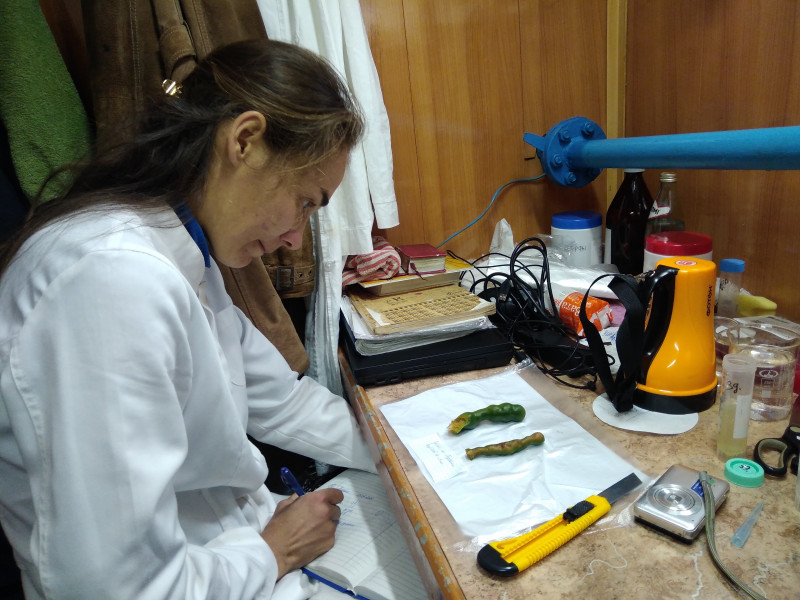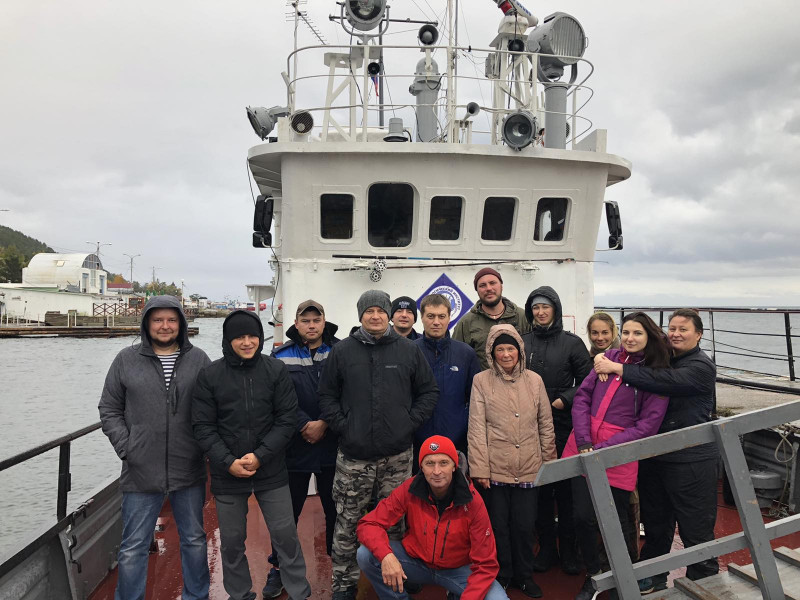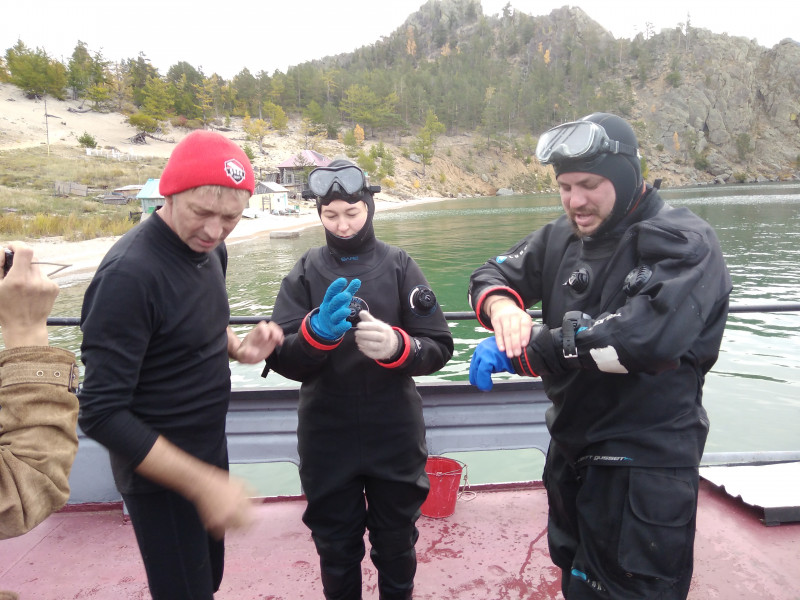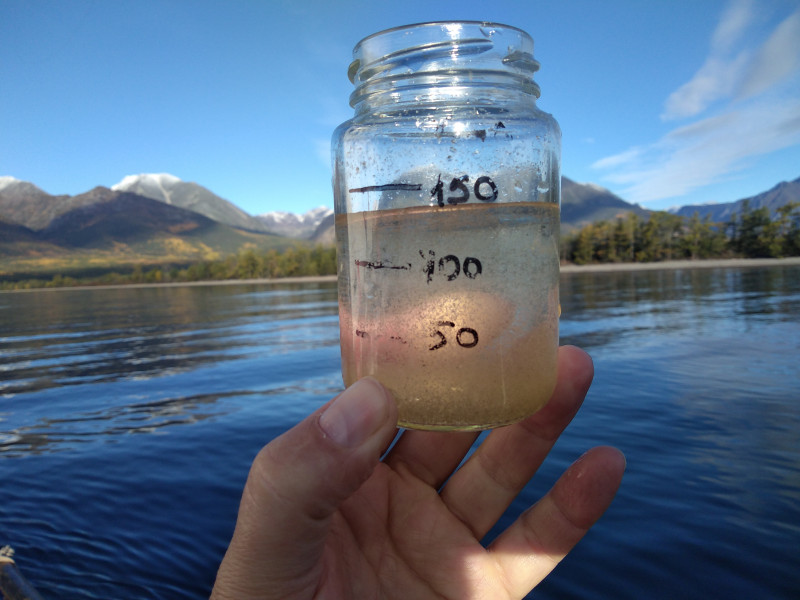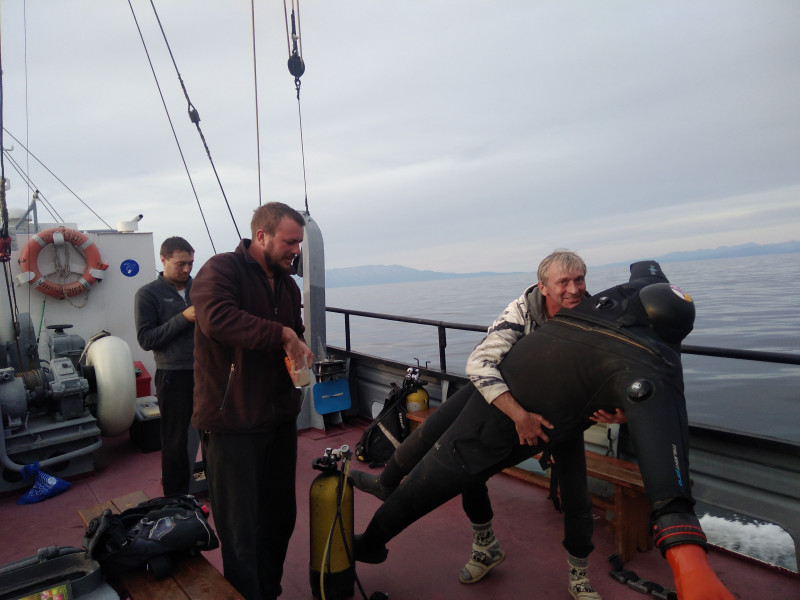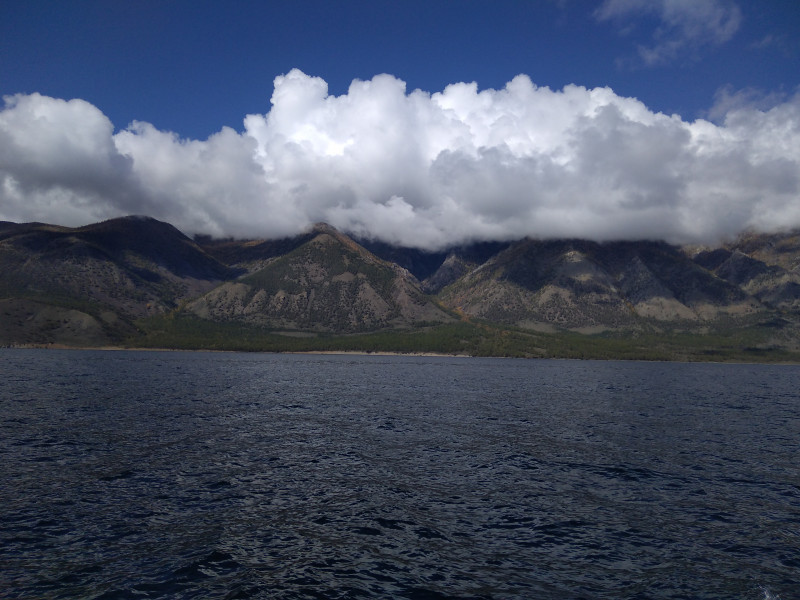Expedition onboard the RV “G. Titov” to study shallow zone of Lake Baikal, September, 18 – 27, 2020
Shallow zone of Lake Baikal was tested along the entire perimeter every 30-40 km. Hydrochemical composition of water was investigated; quantitative and qualitative composition of phytoplankton was determined both in coastal waters and the pelagic zone of three basins of the lake. To assess the species composition and quality composition of fatty acids, as well as concentrations of PCB, phthalates and anionic surfactants in the biomass, phytoplankton was collected. Seasonal reinstallation of automated underwater temperature loggers was carried out. Submarine landscapes were investigated. There was mass vegetation of filamentous algae of the genus Spirogyra at depths from 3 to 6 m regardless of the level of the anthropogenic pressure (Frolikha Bay, Elokhin Cape, Peschanaya Bay, the Kultuk settlement, the Bolshiye Koty settlement, the Ulanovo settlement, and the Bolshoye Goloustnoye settlement). Freely floating filaments of spirogyra were observed in the pelagic zone of Lake Baikal opposite Elokhin Cape. Due to the high water level in Lake Baikal, during the stormy weather, there was an intensive erosion of the coastal slope near the Institute’s research station in the Bolshiye Koty settlement, with the formation of light brown water in the 150-m coastal zone. Along the west coast, from Zavorotnaya Bay to Arul Cape (10-11 m), there was the highest water transparency, and along the east coast, from the Turka settlement to Baklaniy Cape (4.5-5.8 m), there was the lowest water transparency. The average temperature of the surface water layer in Lake Baikal during the expedition was 12-140С. The concentration of dissolved oxygen in the surface water layer averaged 10.-10.5 mg O/dm3. The lowest concentrations of dissolved oxygen (9.7-9.9 mg O/dm3) were recorded near the Severobaikalsk town, and the highest ones – near the Listvyanka settlement after the storm (10.8-11.6 mg O/dm3). The pH values in the surface layer of coastal waters averaged 8.0-8.1.




-e5a26cf82a.jpg)
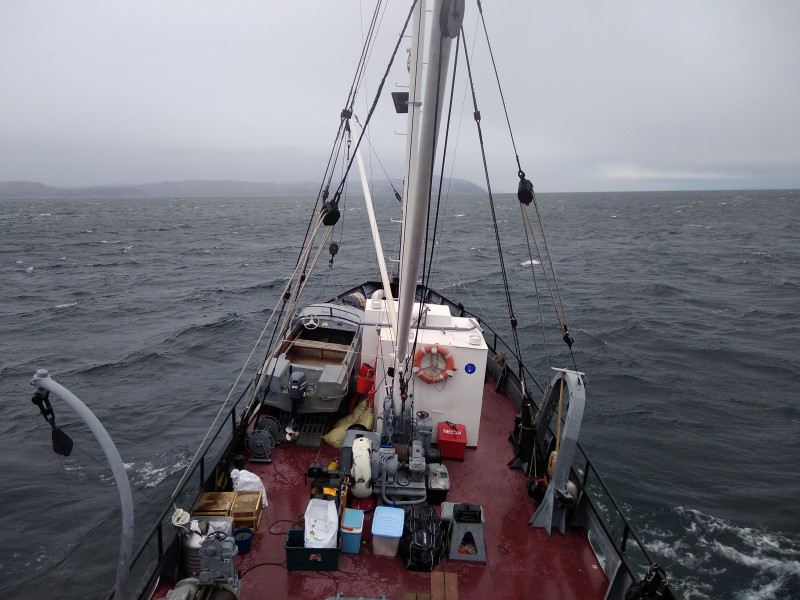
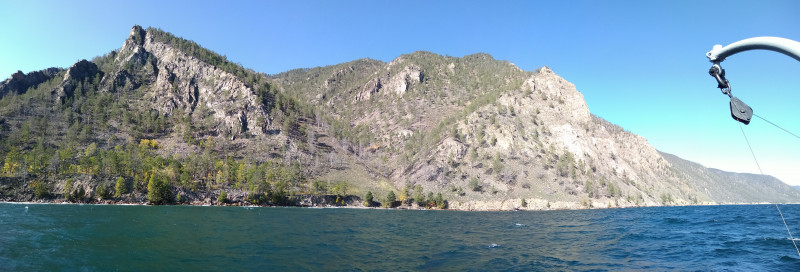
-00773560db.jpg)
